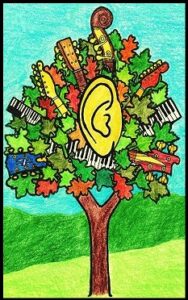 There are so many common misconceptions surrounding music and music education that it’s hard to know where to begin. The popular mindset around “music lessons” has roots going back to the conservatories of 19th century Europe, and earlier. Because classical music has been a professionalized art form for more than 350 years, the “classical school” still sets the standards for legitimacy and professionalism in music education, whether classical or modern.
There are so many common misconceptions surrounding music and music education that it’s hard to know where to begin. The popular mindset around “music lessons” has roots going back to the conservatories of 19th century Europe, and earlier. Because classical music has been a professionalized art form for more than 350 years, the “classical school” still sets the standards for legitimacy and professionalism in music education, whether classical or modern.
Unfortunately, the traditions of the “classical school” include a neurotic rigidity of thought. Modern music educators are afraid to stray too far from classical models and methods. Even though people have been talking and writing about the need to modernize music education since the 1960s, there doesn’t seem to be a consensus as to just what the “modern school” is, as distinct from the traditional, classical school of thought.
Ideas regarding “legitimacy” in music education are still based on biases set down and rigorously enforced by the “classical school.” The result is that many “modern” approaches to teaching music are just reworkings of old classical methods. Most schools that teach modern music, and most modern method books, still cater to classical biases which ignore the ways in which the working methods of professional musicians have changed, especially since the 1960s.
For students who want to learn to write or play in modern styles like rock and country, this is a huge problem. Students who want to learn modern styles get shoehorned into outmoded classical methods which frustrate every creative impulse. Students today are confronted by a nexus of music schools (both accredited and unaccredited), method book publishers, and music teachers which could rightly be called the Music Education Establishment. This Establishment has existed in one form or another for hundreds of years.
The biases of the Music Education Establishment are classical biases. Let’s look at a few of them:
* “Musical literacy” is the ability to read, and perhaps write, staff notation. (After all, what else could it possibly mean?)
* In order to understand music theory, you must read staff notation.
* “Writing music” means just what it says, putting pen to paper, and writing in staff notation.
* The two measures of your ability as a musician are your ability to read staff notation, and your ability to play what you read as accurately as possible.
* “You’re not reading, you’re playing by ear,” is something a piano teacher says to an inattentive student, or an accusation which a conservatory student levels at a rival student.
* The main goal of practicing music is to learn to play it exactly the same way each time.
* Classical music education is the gold standard for music education. Anything other than classical music education barely qualifies as “music education,” and is at best substandard.
Some of these biases might make sense, if you’re a classical musician. The problem is that when you bring them into a modern-day recording session, you discover that these classical biases fly in the face of reality. Modern music requires musicians to improvise and interpret in real time. It requires a mindset that’s alien to many classically-trained musicians. Biases like the ones I’ve just listed are incompatible with many settings in the modern-day music business.
Because of years of conditioning by the Music Education Establishment, people who have never been to music school know that if they sign up for music lessons, they will be required to read music. The Music Education Establishment has conditioned most people to believe that it’s necessary to read music if you want to learn a musical instrument. In this series of posts, I’m going to explain why that isn’t true.
The common misconception that you have to read music to learn an instrument is only one part of the Classical/Modern Disconnect that is killing music education, accredited and non-accredited, modern and classical. Many educators believe improving modern music education is the key to helping a dying classical school to attract a new generation of dedicated adherents.
The Music Education Establishment isn’t an evil monolith which needs to be dismantled. However, there is a logjam in the modern music education system. In this series of posts, we’re going to try to break that jam one log at a time.
It all goes to show the importance of learning to play music by ear.
© 2019, 2020 Greg Varhaug